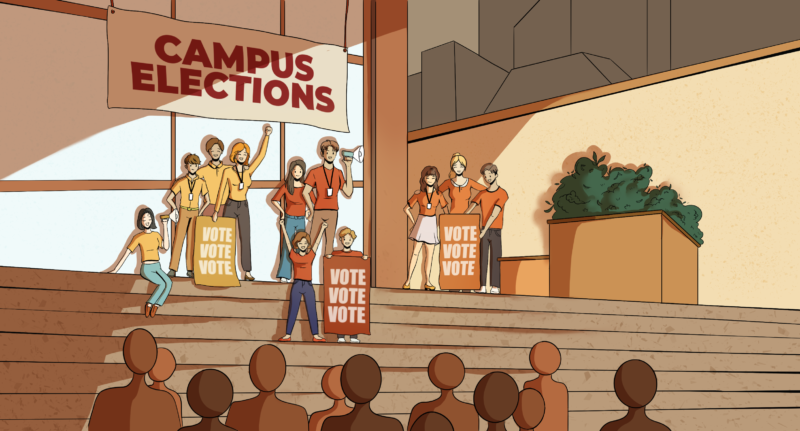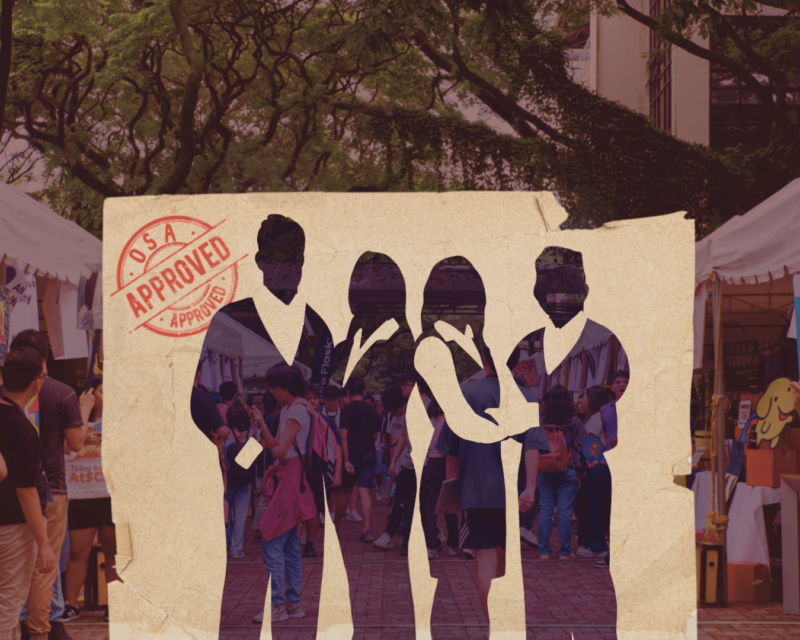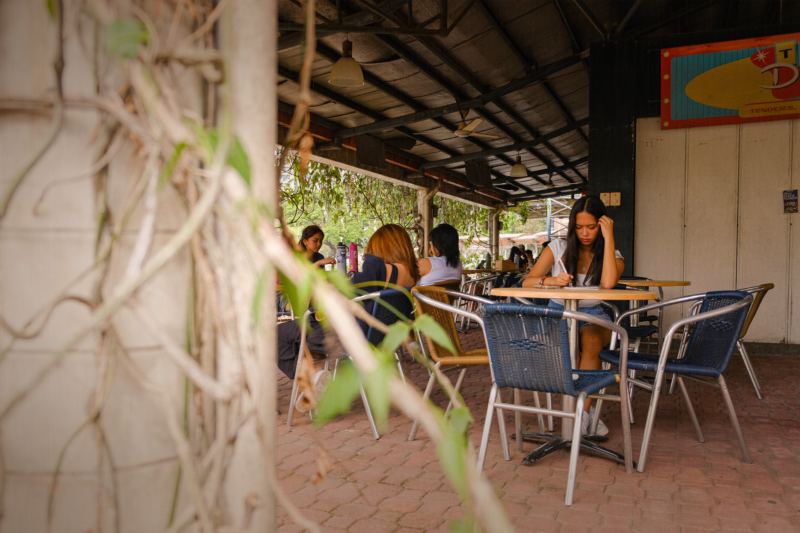BE COMMUNICATIVE, be transparent, and be inclusive—these are just to name a few of the expectations that Loyola Schools (LS) students have for the Sanggunian. Steadfast in their mission to ensure that all student needs are met, the Sanggunian relies on participatory governance to involve students in the various decision-making processes—from the ideation, execution, and evaluation of policies.
However, the Sanggunian faces steep obstacles as it attempts to secure greater participation from students and reverse the dismal rates of engagement in the past. Despite the Sanggunian’s efforts to improve and “revolutionize” their communication strategy this year, students still question the efficiency of the Sanggunian’s communication lines, especially in resolving student concerns.
Spotting disconnections
The purgatory of distance learning—from exclusively attending classes on a computer to grappling with the fast-paced academic calendar—has made students much more vulnerable to burnout. In response to the second year of online classes, many students called for an academic break on anonymous platforms such as Freedom Wall.
While the Sanggunian remained at the forefront of receiving these complaints, students criticized them for their bureaucratic and slow efforts in lobbying for the break to the LS administration. Students also felt “kept in the dark” and unable to keep track of important updates on the push for an academic break because these were mostly posted on Facebook.
The Ateneo Assembly President Arianne Garcia suggests that this is due to Facebook’s algorithms. “There is a possibility that even if you post [updates on the academic break], hindi makikita ng lahat (not everyone will see them), […] so I think [sending emails to] people or communicating with student orgs for disseminating information can be a way to improve [this],” Garcia says.
The Ateneo Assembly Executive Director Myra Arce agrees that the roadblocks in dissemination are a primary driver to the “detached” relationship between the Sanggunian and the student body. Aside from that, she also believes that the student body’s low levels of engagement may be caused by their lack of knowledge on the Sanggunian’s internal structures and processes. Thus, students may find it difficult to fully understand and participate in the Sanggunian’s efforts.
Arce asserts, “The student body has become or has grown uncaring towards what Sanggu does and it’s not entirely on Sanggu. At the same time, it’s not entirely on the student body.”
She further emphasizes that the student body must understand its role in the improvement of the Sanggunian and encourages them to participate in efforts like constituency checks and other surveys that help improve the Sanggunian.
Looking inside
Acknowledging the dismal rates of engagement in previous years, Angan emphasizes, “It was really important for me to basically revamp the communication strategy. We needed to move Sanggu towards a place that meets students where they are and that comes with… making sure that [we], as communicators, make sure that the message is reaching people.”
To efficiently reach students and address their concerns in an objectively structured manner, the Sanggunian relies on bureaucracy in their communicative processes. Thus, once the Sanggunian receives student complaints through Facebook or email, they deliberate and relay the concerns to the appropriate Sanggunian commissions and offices in the LS.
For example, academic concerns are forwarded to School Sanggunians, who are in direct contact with deans and departments. Meanwhile, other concerns regarding student rights are relayed to the appropriate student rights commissions.
In doing so, Sanggunian Communications Chair Jean Mangaluz emphasizes that the real decision-making powers do not fall on the Sanggunian but on the LS administration. By serving as a liaison, the Sanggunian is instead like a moving bridge that connects the student body to the administration.
However, Mangaluz acknowledges that engagement can still be improved by steering away from a social media-centered approach. Thus, the Sanggunian has since sought to encourage engagement by tapping various sectors such as LS organizations, the beadle community, the University Athletics Office—instead of just “passively posting” updates on the Sanggunian’s social media accounts.
Moreover, Angan adds that the Sanggunian is currently working on a Concern Management Plan for internal processes. This is to avoid bottlenecks from unanswered queries.
“[This would be] linking up all the different commissions, School Sanggunians, [and] the internal people who handle our Facebook and emails, and then basically streamlining based on any frequently asked questions or concerns,” Angan expounds.
Fixing the communication line
Given the low levels of engagement between the Sanggunian and the student body, Political Science Assistant Professor Anne Lan Candelaria, PhD, warns that the lack of proper communication makes the student body feel neglected and leads them to further disengage.
Thus, a clear communication plan is essential to the Sanggunian’s relationship with the student body. She emphasizes that it prevents occurrences of unwanted miscommunication, which is especially important in the digital space that is always prone to misinterpretation and incoherence.
Once the Sanggunian can clearly communicate with the student body, Candelaria says that students will further see them as a strong and dependable figure that is fully capable of representing the whole community.
“[The Sanggunian] has to be robust, given that they are the only recognized organization to represent the undergraduate community in the LS. If they are organizationally weak, they cannot effectively represent [students],” Candelaria explains.
In order to maintain a well-engaged relationship between the student government and the student body, she advises that the Sanggunian must be transparent in terms of its weaknesses and limitations when it comes to meeting students’ needs. At the same time, the student body must also familiarize themselves with the Sanggunian’s goals and missions.
“The fundamental problem is that people don’t often ask who Sanggu is…. It must be answered in order to know if [the Sanggunian] is something or someone that [students] can relate to,” Candelaria says.
Being aware of the Sanggunian’s limitations can help the students set realistic expectations when it comes to the governing body’s capabilities. Therefore, transparency should not only be applied to the Sanggunian’s accomplishments and progress, but it must also extend to its constraints and weaknesses.
The Bigger Picture
In order for the Sanggunian and the student body to foster a better relationship, Arce states that the two must work together. She further emphasizes that the Sanggunian has to go beyond their usual reaching-out initiatives, which currently consist of surveys and broadcasts when crises erupt in the LS, such as during the mass student strike.
Mangaluz shares similar sentiments, “You need to engage people on issues they care about. Otherwise, they won’t engage at all. That’s where you start, eh, on issues they care about.”
By improving their communication with the student body, Angan hopes to create a more engaged LS community. She asserts, “It really needs a whole upheaval of how we’ve [Sanggunian] been doing things or how we’ve been operating. So hopefully, in the next elections, the seeds that we have sown will bear fruit.”







